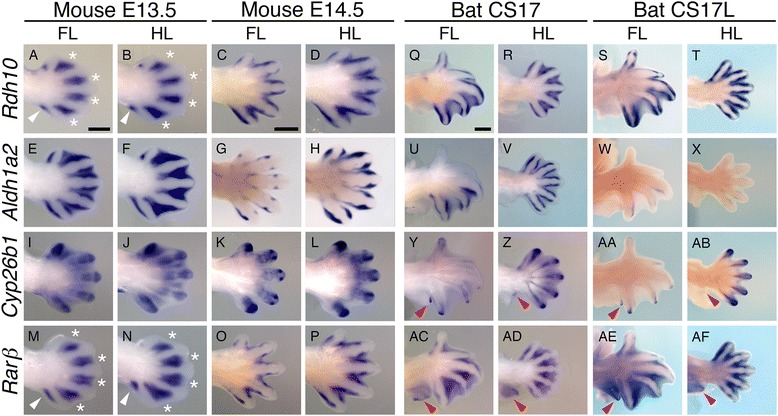Figure 6.

RA signalling is active in the interdigital region of bat forelimb and hindlimb autopods. Expression of genes involved in retinoic acid (RA) synthesis, degradation and signalling in the bat CS17 and CS17L as compared to those of the E13.5 and E14.5 mouse indicate that this pathway is active in both the FL and the HL interdigital tissue of these mammals. Rarβ and Rdh10 expression in the mouse limbs (A, B, C, D and M, N, O, P) is not visible in the distal interdigital region (white asterisk) and is concentrated in the proximal posterior necrotic zone (white arrows). In bat limbs, Rdh10 (Q, R, S, T) and Aldh1a2 (U, V, W, X) are expressed in the region bordering the developing digits, as well as being weakly expressed in the interdigital tissue. In contrast, Aldh1a2 is expressed in the interdigital tissue with a distal concentration gradient in mouse FL and HL at E13.5 (E, F). This expression is restricted to tissue flanking the distal digit rays by E14.5 (G, H). In both the mouse and the bat limbs, Cyp26b1 (I, J, K, L and Y, Z, AA, AB) is expressed in the developing digital rays and is highest at the tips of the digits. In bat, Cyp26b1 (Y, Z, AA, AB) is also weakly expressed in the interdigital tissue. Red arrows indicate Cyp26b1 (Y, Z, AA, AB) and Rarβ (AC, AD, AE, AF) expression in the patagia. Dorsal views of autopods are shown. Scale bars represent 500 μm.
